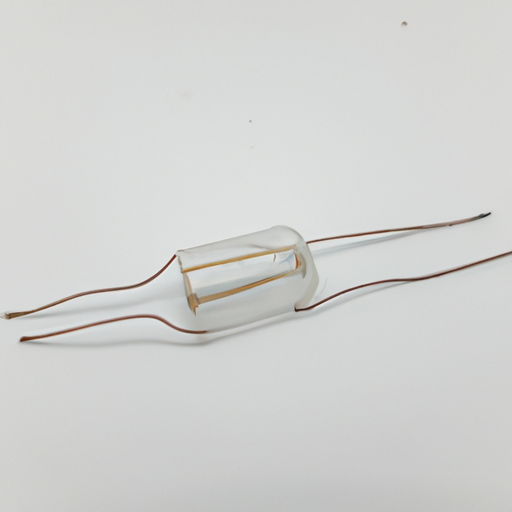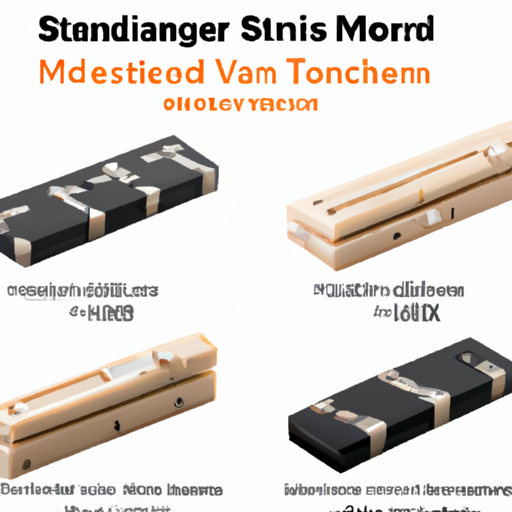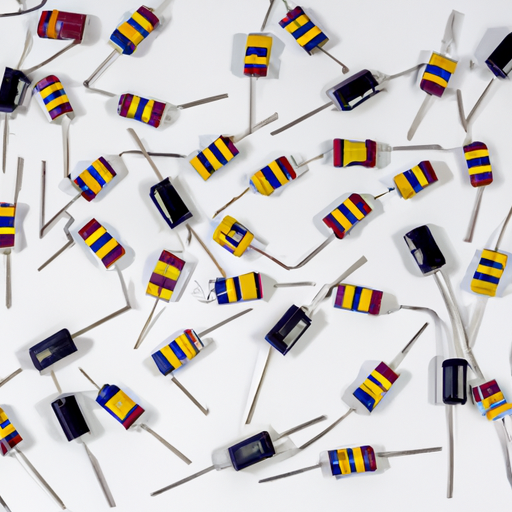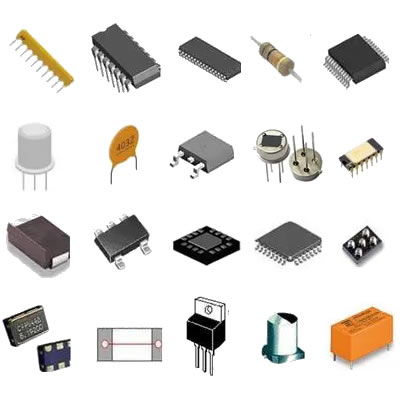An article to help you understand what a glass glaze resistor is
Understanding Glass Glaze Resistors
I. Introduction
In the world of electronics, resistors play a crucial role in controlling the flow of electric current. Among the various types of resistors available, glass glaze resistors stand out due to their unique properties and applications. This article aims to provide a comprehensive understanding of glass glaze resistors, their advantages, limitations, and how to choose the right one for your needs.
II. Overview of Resistors
A. What is a Resistor?
A resistor is a passive electronic component that limits or regulates the flow of electrical current in a circuit. By providing resistance, it helps to control voltage levels and protect sensitive components from damage. Resistors are essential in various applications, from simple circuits to complex electronic devices.
1. Function in Electrical Circuits
The primary function of a resistor is to impede the flow of current. This is achieved by converting electrical energy into heat, which is then dissipated. The amount of resistance is measured in ohms (Ω), and it determines how much current will flow for a given voltage according to Ohm's Law (V = IR).
2. Types of Resistors
There are several types of resistors, each with its own characteristics and applications. Common types include:
Carbon Film Resistors: Made from a carbon film deposited on a ceramic substrate, these resistors are cost-effective and widely used.
Metal Film Resistors: Known for their precision and stability, metal film resistors are often used in applications requiring high accuracy.
Wire-Wound Resistors: Constructed by winding a metal wire around a core, these resistors can handle high power levels but are bulkier.
B. Key Characteristics of Resistors
When selecting a resistor, several key characteristics must be considered:
1. Resistance Value
The resistance value indicates how much the resistor will impede current flow. It is typically specified in ohms and can vary widely depending on the application.
2. Tolerance
Tolerance refers to the allowable deviation from the specified resistance value. It is usually expressed as a percentage. For example, a resistor with a tolerance of ±5% can have a resistance value that is 5% higher or lower than its nominal value.
3. Power Rating
The power rating indicates the maximum amount of power the resistor can dissipate without being damaged. It is measured in watts (W) and is crucial for ensuring the resistor operates safely within its limits.
III. What is a Glass Glaze Resistor?
A. Definition and Composition
Glass glaze resistors are a type of fixed resistor that utilizes a glass glaze coating to provide electrical resistance. The core of these resistors is typically made from a ceramic material, which is then coated with a glass glaze that contains metal oxides. This combination results in a durable and stable resistor.
1. Materials Used in Glass Glaze Resistors
The primary materials used in glass glaze resistors include:
Ceramic Substrate: Provides mechanical strength and thermal stability.
Glass Glaze: A mixture of metal oxides that determines the resistance value and enhances durability.
2. Manufacturing Process
The manufacturing process of glass glaze resistors involves several steps:
1. **Preparation of the Ceramic Substrate**: The ceramic material is shaped and fired to create a stable base.
2. **Application of Glass Glaze**: The glass glaze is applied to the substrate, often through a screen-printing process.
3. **Firing**: The coated substrate is fired at high temperatures to fuse the glass to the ceramic, creating a solid bond.
4. **Trimming and Testing**: The resistors are trimmed to achieve the desired resistance value and tested for quality assurance.
B. Comparison with Other Types of Resistors
Glass glaze resistors offer distinct advantages compared to other resistor types:
1. Carbon Film Resistors
While carbon film resistors are cost-effective, they may not provide the same level of stability and environmental resistance as glass glaze resistors.
2. Metal Film Resistors
Metal film resistors are known for their precision, but glass glaze resistors can offer better performance in harsh environments due to their superior moisture and chemical resistance.
3. Wire-Wound Resistors
Wire-wound resistors can handle higher power levels but are bulkier and may not be suitable for applications requiring compact designs. Glass glaze resistors, on the other hand, provide a good balance of size and performance.
IV. Advantages of Glass Glaze Resistors
A. Stability and Reliability
One of the key advantages of glass glaze resistors is their stability over time. They maintain their resistance value even under varying temperature and humidity conditions, making them reliable for long-term use.
B. Temperature Coefficient
Glass glaze resistors typically have a low temperature coefficient, meaning their resistance value changes minimally with temperature fluctuations. This characteristic is essential for applications requiring consistent performance.
C. Resistance to Environmental Factors
1. Moisture Resistance
The glass glaze coating provides excellent moisture resistance, making these resistors suitable for use in humid environments where other resistor types may fail.
2. Chemical Resistance
Glass glaze resistors are also resistant to many chemicals, allowing them to be used in applications where exposure to harsh substances is a concern.
D. Long Lifespan
Due to their robust construction and resistance to environmental factors, glass glaze resistors have a long operational lifespan, reducing the need for frequent replacements.
V. Applications of Glass Glaze Resistors
A. Common Uses in Electronic Devices
Glass glaze resistors are widely used in various electronic devices, including:
- Power supplies
- Signal processing circuits
- Audio equipment
B. Specific Industries that Utilize Glass Glaze Resistors
1. Automotive
In the automotive industry, glass glaze resistors are used in engine control units and other electronic systems that require high reliability and stability.
2. Telecommunications
Telecommunications equipment often relies on glass glaze resistors for signal integrity and performance in challenging environments.
3. Consumer Electronics
Many consumer electronics, such as televisions and audio systems, incorporate glass glaze resistors to ensure consistent performance.
C. Examples of Devices that Incorporate Glass Glaze Resistors
Examples of devices that utilize glass glaze resistors include:
- Industrial control systems
- Medical devices
- Home appliances
VI. Limitations of Glass Glaze Resistors
A. Cost Considerations
While glass glaze resistors offer many advantages, they can be more expensive than other resistor types, which may be a consideration for budget-sensitive projects.
B. Size and Form Factor
Glass glaze resistors may be larger than some alternatives, which can be a limitation in applications where space is at a premium.
C. Performance in High-Frequency Applications
In high-frequency applications, glass glaze resistors may not perform as well as other types, such as metal film resistors, due to their inherent inductance.
VII. How to Choose the Right Glass Glaze Resistor
A. Factors to Consider
When selecting a glass glaze resistor, consider the following factors:
1. Resistance Value
Ensure the resistor's resistance value matches the requirements of your circuit.
2. Power Rating
Choose a resistor with an appropriate power rating to handle the expected load without overheating.
3. Tolerance
Select a resistor with a tolerance that meets your application's precision requirements.
B. Understanding Specifications and Datasheets
Familiarize yourself with the specifications and datasheets provided by manufacturers to make informed decisions about resistor selection.
C. Recommendations for Sourcing Quality Resistors
When sourcing glass glaze resistors, consider reputable suppliers and manufacturers known for their quality and reliability.
VIII. Conclusion
Glass glaze resistors are an essential component in many electronic applications, offering stability, reliability, and resistance to environmental factors. As technology continues to evolve, the demand for high-performance resistors will only increase. Understanding the characteristics and applications of glass glaze resistors can help engineers and hobbyists make informed decisions in their projects. As you explore the world of electronic components, consider the role that glass glaze resistors can play in enhancing the performance and longevity of your designs.
IX. References
For further reading and resources on glass glaze resistors and other electronic components, consider the following:
- "Electronic Components: A Complete Reference for Engineers and Technicians" by John Doe
- Industry standards and guidelines from organizations such as the Institute of Electrical and Electronics Engineers (IEEE) and the International Electrotechnical Commission (IEC).
By delving deeper into the world of resistors, you can enhance your understanding of electronic circuits and improve your design skills.





